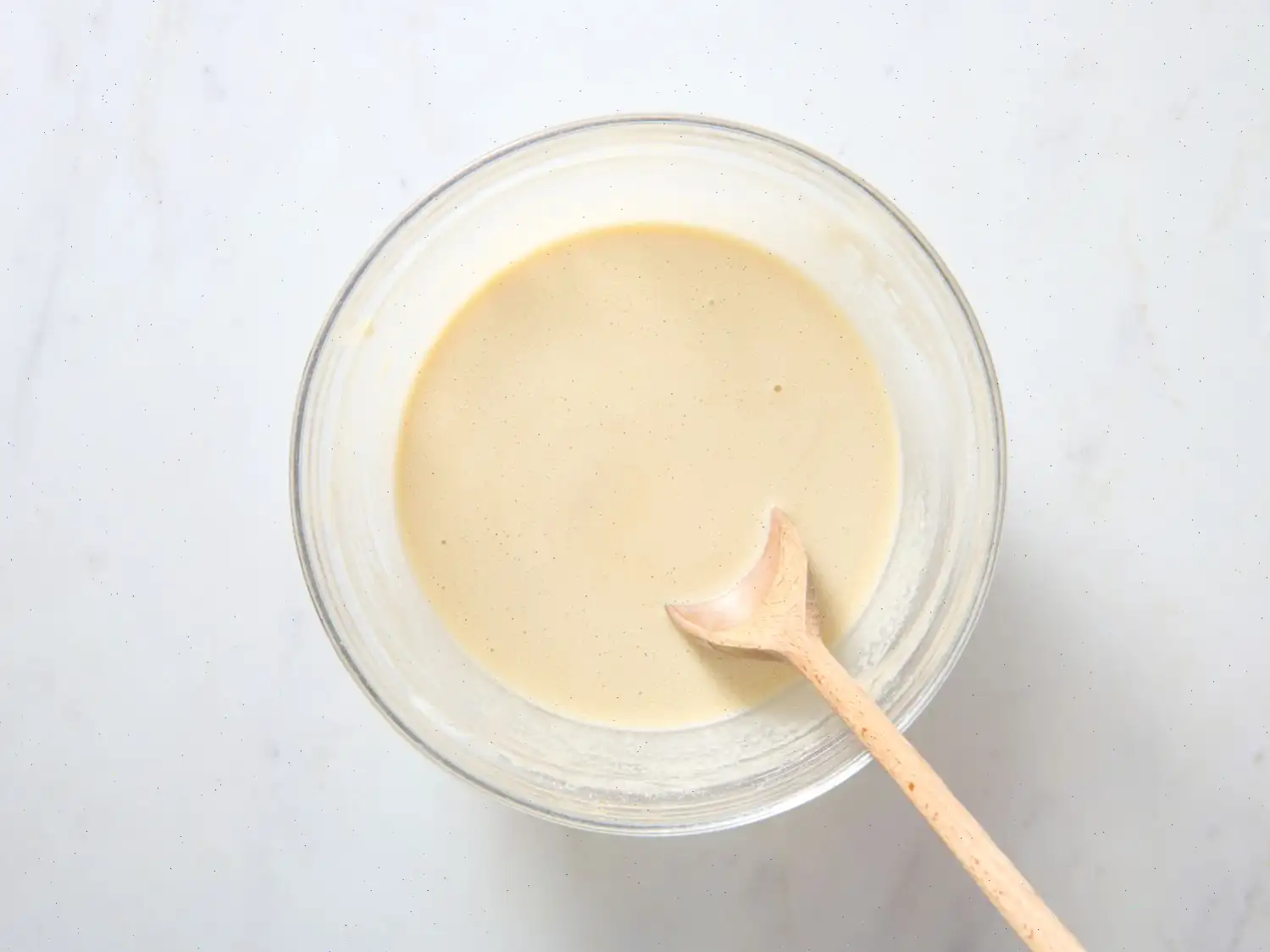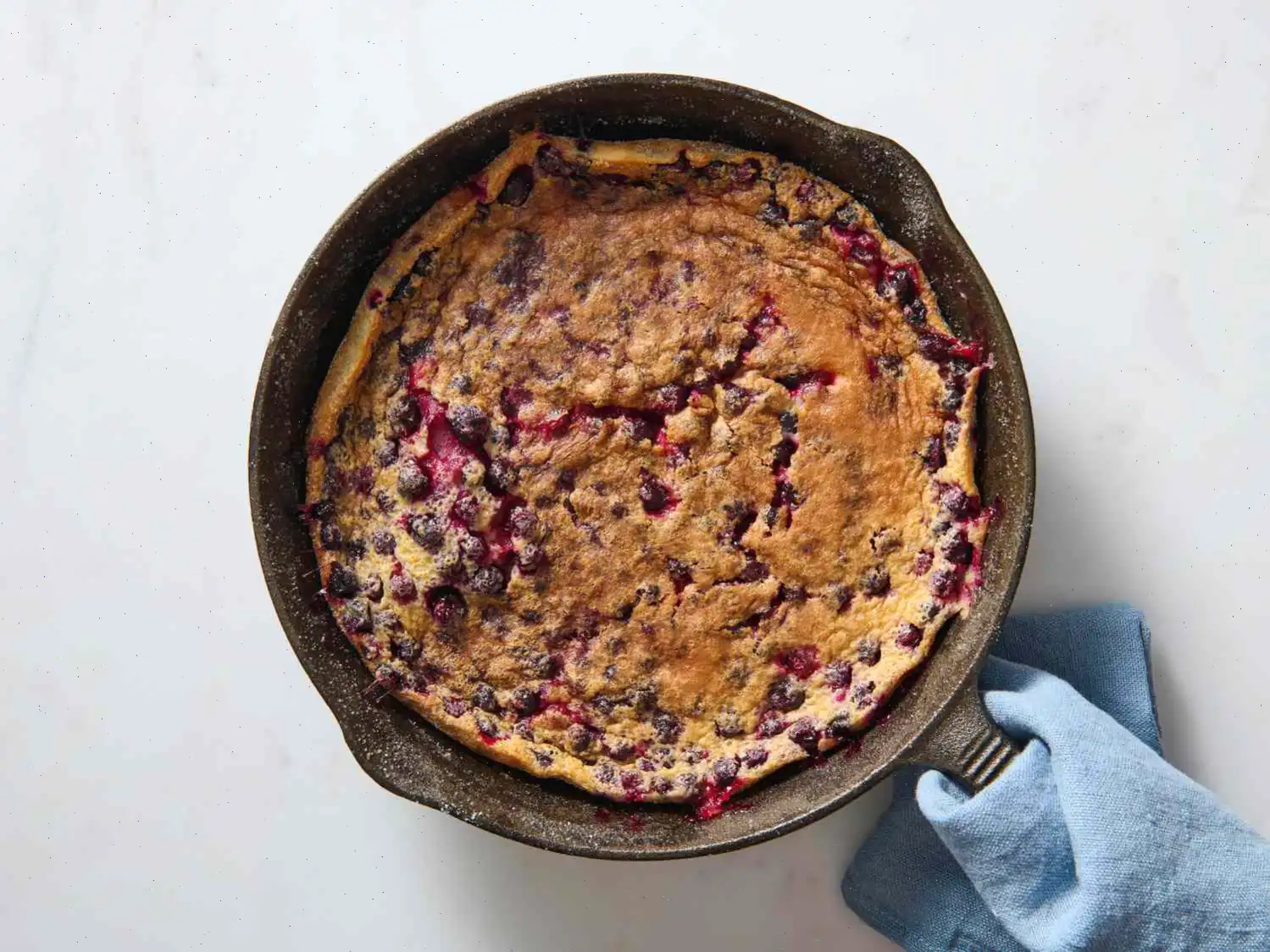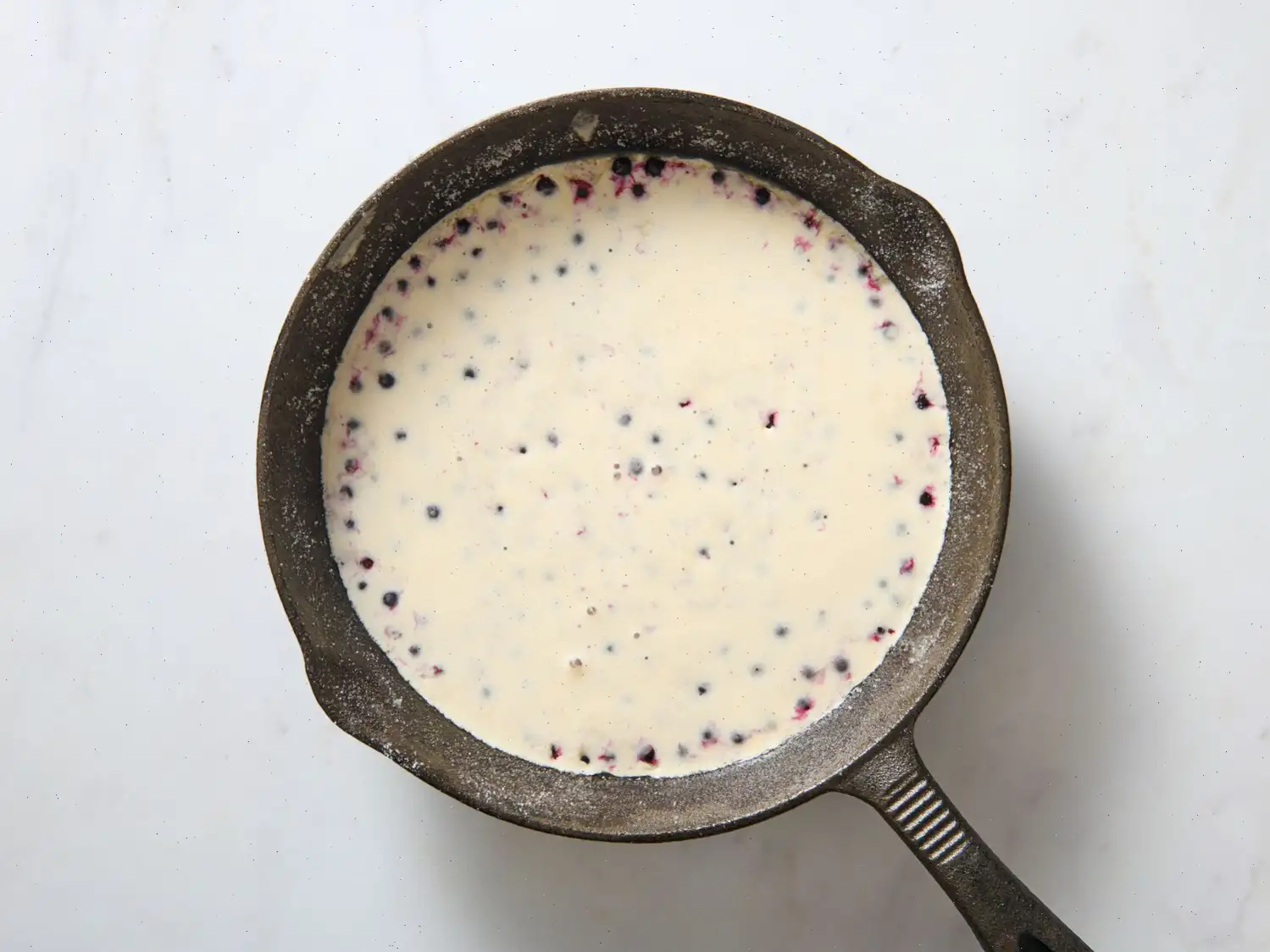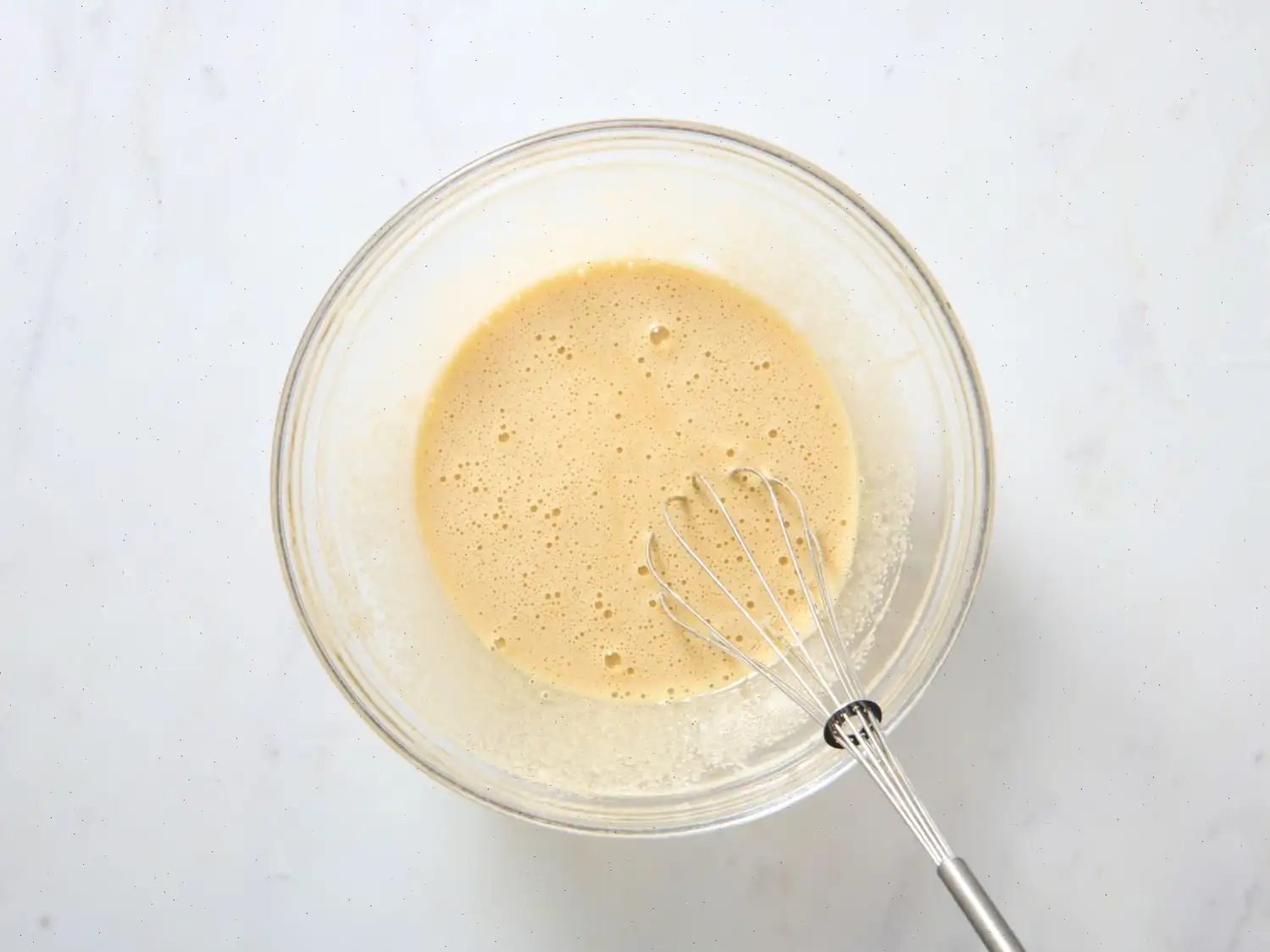
Blackcurrant and Miso Clafoutis Recipe
Ingredients
This recipe was developed at its original yield. Ingredient amounts are automatically adjusted, but cooking times and steps remain unchanged. Note that not all recipes scale perfectly.
Original recipe (1X) yields 4 to 6 servings:
- 8 tablespoons white sugar, divided
- 4 tablespoons light brown sugar
- 2 large eggs, at room temperature
- 1 1/2 teaspoons vanilla extract
- 1 teaspoon miso paste
- 6 tablespoons all-purpose flour
- 7 tablespoons heavy whipping cream or double cream
- 2/3 cup milk
- 1 tablespoon butter, for greasing
- 2 cups blackcurrants, removed from their vines
Directions
Step 1: Gather all ingredients. Preheat the oven to 400F (200C).
Step 2: In a bowl, combine 7 tablespoons of white sugar, light brown sugar, eggs, vanilla extract, and miso paste. Whisk vigorously for 2 to 3 minutes until the eggs are foamy.
Step 3: Whisk in the flour until the mixture is smooth, then add the milk and heavy cream. Stir until fully combined.
Step 4: Melt 1 tablespoon of butter in a heavy ovenproof cast iron skillet. Use a paper towel to spread the butter evenly around the base and sides of the skillet.
Step 5: Sprinkle the remaining 1 tablespoon of sugar into the skillet to create a thin, glittering crust.
Step 6: Tip the blackcurrants into the prepared skillet and arrange them evenly.
Step 7: Carefully pour the batter over the blackcurrants, ensuring even distribution.
Step 8: Place the skillet in the preheated oven and bake for about 30 minutes, or until the clafoutis is set around the edges but still jiggles slightly in the center.
Step 9: Let the clafoutis cool until lukewarm before serving.
Cook's Notes
Alternatively, you can use a ceramic pie dish. In this case, melt the butter in the dish in the oven for a few minutes rather than on the stove.
Nutrition Facts (per serving)
- Calories: 261
- Total Fat: 10g (13% DV)
- Saturated Fat: 6g (30% DV)
- Cholesterol: 88mg (29% DV)
- Sodium: 94mg (4% DV)
- Total Carbohydrates: 38g (14% DV)
- Dietary Fiber: 0g (1% DV)
- Total Sugars: 26g
- Protein: 5g (10% DV)
- Vitamin C: 68mg (75% DV)
- Calcium: 84mg (6% DV)
- Iron: 1mg (7% DV)
- Potassium: 223mg (5% DV)
* Percent Daily Values are based on a 2,000 calorie diet. Your daily values may be higher or lower depending on your calorie needs.
** Nutrient information is not available for all ingredients. Amount is based on available nutrient data.
Note: If following a medically restrictive diet, please consult your doctor or registered dietitian before preparing this recipe for personal consumption.
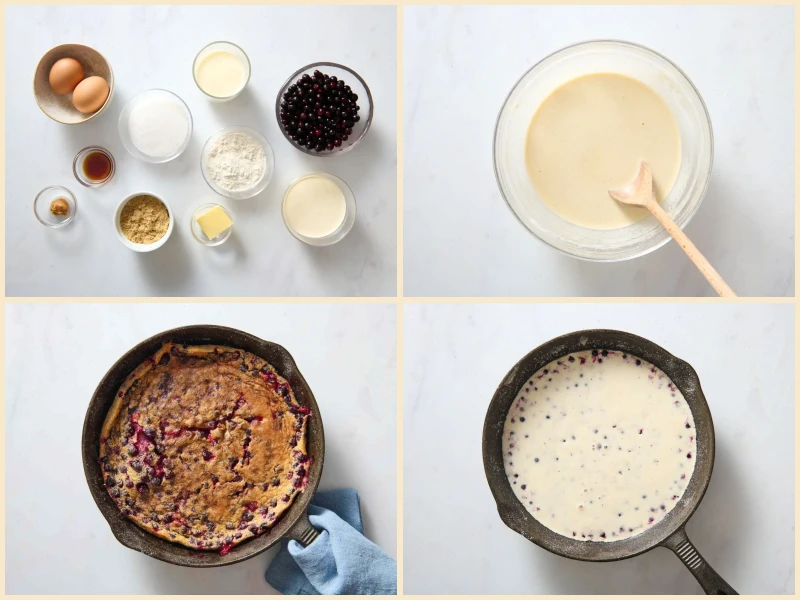
The Blackcurrant and Miso Clafoutis is a modern twist on the classic French dessert that traditionally features cherries. By adding blackcurrants, known for their tartness, and miso paste, which introduces a subtle umami flavor, this version takes on a unique profile. The addition of miso brings an unexpected depth that perfectly balances the sweetness of the fruit. This fusion dessert is an excellent example of how international ingredients can be combined to create something both comforting and innovative.
Origin and History
The clafoutis is a traditional French dessert that originates from the Limousin region in the central part of France. Historically, it was made with cherries, as the area was known for its abundant cherry orchards. The word "clafoutis" comes from the Occitan word clafir, meaning to fill, referring to the way the fruit is arranged in the batter. While the original dish has remained relatively unchanged over the centuries, modern variations like this Blackcurrant and Miso Clafoutis are an exciting evolution of the classic recipe, showcasing the versatility of the dish and the growing trend of experimenting with sweet and savory combinations.
Regional Features
Clafoutis, in its traditional form, is an iconic dessert in France, particularly in the Limousin region. The use of local ingredients like cherries, apples, and even pears varies depending on the seasonal produce available in different areas of France. This Blackcurrant and Miso Clafoutis takes the dish a step further by incorporating flavors that are not typically associated with French cuisine, such as miso paste, a staple of Japanese cooking. The blackcurrant, with its bold, tangy flavor, adds an extra layer of complexity that is not found in the original cherry-based version, making this dessert a delightful fusion of French and Asian culinary traditions.
Differences from Similar Dishes
Compared to other fruit-based French desserts like tarts or fruit compotes, clafoutis is unique in that it features a custard-like batter that is poured over the fruit and baked. The result is a soft, almost souffle-like texture, with the fruit gently incorporated into the batter. This sets it apart from other fruit-based desserts where the fruit is either baked into a pastry crust or served as a topping. The addition of miso paste is also what truly differentiates this dish from more traditional clafoutis, as miso is typically used in savory dishes, not desserts. This bold choice introduces an element of savory depth that balances the sweetness of the fruit in a way not typically seen in dessert recipes.
Where It's Typically Served
Clafoutis is typically served as a dessert in France, often during the summer months when fresh cherries are in season. In the case of the Blackcurrant and Miso Clafoutis, it is an excellent choice for dinner parties or gatherings where guests might appreciate a more experimental dessert. It pairs wonderfully with a dollop of fresh whipped cream or a scoop of vanilla ice cream, enhancing the desserts creamy texture. While clafoutis is not as widely known outside of France, it is gaining popularity in many other countries as food enthusiasts continue to explore the rich history of French cuisine and the appeal of less conventional desserts.
Interesting Facts
1. The traditional clafoutis recipe was once made with unpitted cherries, which gave the dessert an almond-like flavor due to the pits. This practice has since been replaced in many modern versions for convenience, though some purists still adhere to the original method.
2. Miso paste, the key ingredient in this variation, is a fermented soybean paste widely used in Japanese cooking. It has been around for thousands of years and is typically found in savory dishes like soups and marinades. Its use in desserts is relatively new and part of an exciting trend of incorporating savory umami flavors into sweet treats.
3. Blackcurrants, the primary fruit in this recipe, are not only delicious but also packed with vitamin C, antioxidants, and other nutrients, making this dessert a slightly healthier option than some other sugary treats.
Conclusion
The Blackcurrant and Miso Clafoutis is a modern twist on a traditional French dish, combining the tartness of blackcurrants with the umami richness of miso paste. This dessert reflects the growing trend of blending different culinary traditions, creating new and exciting flavors. Whether you are a fan of classic French cuisine or someone looking for a unique dessert to surprise your guests, this clafoutis is sure to impress with its unexpected flavor profile and delicate texture.



